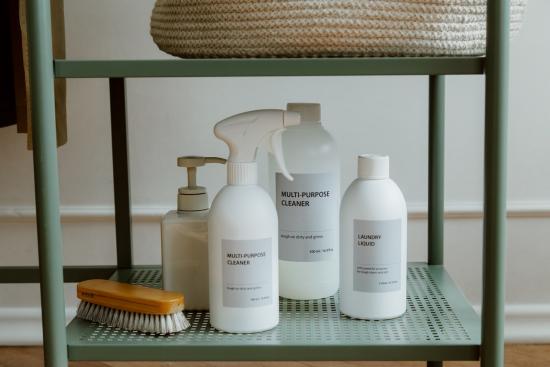
8 Hidden Toxins: What’s Lurking in Your Cleaning Products?
We assume they are safe. But in fact, many popular household cleaners are dangerously toxic. Learn about the eight scariest substances hiding under your kitchen sink, and how to replace them with safer, more natural options that really work.
When a pain in Beth Greer’s shoulder led her to a chiropractor nine years ago, she wasn’t that worried. After all, she led a healthy lifestyle: She watched her weight, meditated regularly, and ate mostly organic food. Greer’s chiropractor wasn’t worried either; he diagnosed her with a herniated disk. But after three sessions, not only was she not better, the pain was beginning to radiate down her arm and into her fingers.
An MRI revealed the true cause of Greer’s pain: a tennis-ball-size tumor in her chest. The good news was the mass was benign. Still, each of the three thoracic surgeons Greer saw strongly recommended she have it removed. One wanted to get at it by going in under her collarbone, one wanted to reach the mass through her armpit, and the third wanted to remove a rib to get the tumor from the back.
They all agreed on just one thing: The surgery was risky. Because the tumor was in such a nerve-packed place, there was a real possibility that removing it could cause Greer to lose feeling in her hand.
Greer opted out of the surgery, and instead focused on doing everything she could to support her body’s healing capacity. Curious by nature (she and her husband, Steven Seligman, owned the Learning Annex, a group of schools offering short-term classes on everything from relationships to real-estate), Greer decided to learn everything she could about her condition and discovered that tumors typically grow in response to irritation and inflammation. Eliminating environmental toxins that might be contributing to her tumor’s growth seemed like a practical first step.
First, she turned her attention to the conventional household cleaning products tucked away in her cabinets. “I’d look at a label and it would say ‘hazardous to humans and domestic animals,’” says Greer. “So why would anyone want to use that?”
She ultimately tossed her entire collection of toxic cleaning products and began making her own with ingredients like vinegar, baking soda and essential oil. She also swapped her commercial body-care products and makeup for nontoxic ones, and she cleaned up her already healthy diet by eating only whole, unprocessed foods — without any labels.
Nine months later, her tumor was gone. Completely. Although she can’t pin her results on any one environmental change, Greer’s confident that cutting down her exposure to toxins played a critical role — so much so that she’s made sharing that information with others a central part of her life.
Today, Greer consults professionally with others who want to detoxify their homes and offices. In 2002 she and Seligman sold the Learning Annex and she began writing about toxin-free living. The result is her book, Super Natural Home.
During her research for the book, Greer was shocked to learn that there’s no federal regulation of chemicals in household products. Rebecca Sutton, PhD, a senior scientist at the Environmental Working Group (EWG), explains, “In terms of household cleaners, neither ingredients nor products must meet any sort of safety standard, nor is any testing data or notification required before bringing a product to market.”
The average household contains about 62 toxic chemicals, say environmental experts. We’re exposed to them routinely — from the phthalates in synthetic fragrances to the noxious fumes in oven cleaners. Ingredients in common household products have been linked to asthma, cancer, reproductive disorders, hormone disruption and neurotoxicity.
Manufacturers argue that in small amounts these toxic ingredients aren’t likely to be a problem, but when we’re exposed to them routinely, and in combinations that haven’t been studied, it’s impossible to accurately gauge the risks. While a few products cause immediate reactions from acute exposure (headaches from fumes, skin burns from accidental contact), different problems arise with repeated contact. Chronic exposure adds to the body’s “toxic burden” — the number of chemicals stored in its tissues at a given time.
This toxic body burden is EWG’s chief concern about household chemicals. Sutton explains: “Our concern is daily, weekly, chronic exposure over a lifetime. Maybe if you’re exposed to a chemical a handful of times it wouldn’t cause harm, but some chemicals build up enough or cause enough harm in your body over time that it triggers some kind of disease outcome. The concept [of body burden] is that pollution is not just in our air and in our water — it’s also in us.”
No one can avoid exposure to toxic chemicals altogether, but it is possible to reduce it significantly. Below, Greer, Sutton and other experts weigh in on the worst toxic offenders commonly found in household cleaning products, and offer ways to swap them for healthier, safer options.







